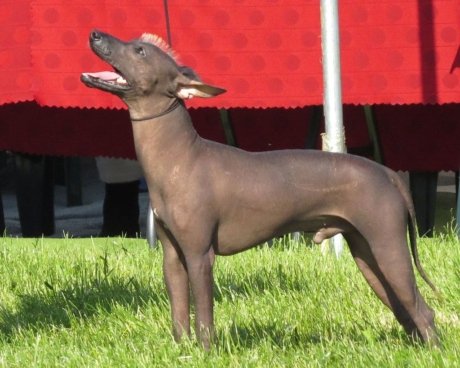Weimaraner Dog | Breed Information, Price, 8 Types, Care Tips, Facts, Health
Weimaraner dogs, often referred to as the “Gray Ghosts” of the canine world, are a breed of remarkable versatility and beauty. If you’re considering adding a Weimaraner to your family or you’re simply curious about these unique dogs, this article will provide you with valuable insights into their history, characteristics, care requirements, and more. Whether you’re a seasoned dog owner or a first-time pet parent, join us as we delve into the world of Weimaraner dogs and discover what makes them such extraordinary companions.
Weimaraner
The Weimaraner, often referred to as the “Gray Ghost” due to its striking silver-gray coat, is a breed of dog that has captivated dog enthusiasts around the world. Known for its elegance, athleticism, and intelligence, the Weimaraner is a versatile breed that excels in various roles, making it a popular choice among dog owners. In this article, we will explore the history, characteristics, temperament, and care requirements of the Weimaraner dog.

Weimaraners originated in Germany, with their history dating back to the early 19th century. The breed was developed for hunting large game, such as boar, deer, and bears. Their striking gray coat served to camouflage them in the dense forests, allowing them to work alongside hunters without being mistaken for game. Over time, Weimaraner Dogs evolved into a versatile breed capable of hunting a wide range of prey.
One of the most notable features of Weimaraners is their sleek, silver-gray coat, which is short and fine. Their distinctive coloration, along with their amber or blue-gray eyes, sets them apart and contributes to their regal appearance. They have a well-muscled and athletic body, reflecting their history as hunting dogs. Weimaraner Dogs are known for their long legs and webbed feet, which make them excellent swimmers.
In terms of temperament, Weimaraner Dogs are renowned for their loyalty and affection towards their families. They are known to be highly intelligent and trainable, but this also means they require mental stimulation and regular exercise to stay happy. They can be quite energetic and may become destructive if not given the opportunity to burn off their excess energy. Proper training and socialization from a young age are crucial to ensure a well-adjusted Weimaraner Dog.

Weimaraners are often described as being good with children and other dogs, provided they are properly socialized. They thrive on human interaction and can become quite attached to their owners. While they are typically friendly, their hunting instincts may lead them to chase smaller animals, so supervision is recommended when introducing them to smaller pets.
When it comes to care, Weimaraner Dogs need regular exercise to stay physically and mentally fit. They enjoy activities such as running, hiking, and agility training. Their short coat requires minimal grooming, but they do shed, so regular brushing can help keep their coat healthy and reduce shedding. Due to their sensitive nature, a balanced diet is essential for their overall well-being.
Weimaraner Characteristics
Here are some common characteristics of the Weimaraner Dog breed:
| Characteristic | Description |
|---|---|
| Size | Medium to large breed, typically 22-27 inches tall at the shoulder. |
| Weight | Adult Weimaraners generally weigh between 55-85 pounds. |
| Coat | Short, fine, and sleek silver-gray coat. |
| Color | Silver-gray, with some variations like blue or long-haired Weimaraner Dogs. |
| Eyes | Amber or blue-gray, with a distinctive and expressive appearance. |
| Temperament | Intelligent, loyal, affectionate, energetic, and sometimes stubborn. |
| Exercise Needs | High exercise requirements, need regular physical and mental stimulation. |
| Training | Highly trainable, but require consistent training and early socialization. |
| Compatibility | Generally good with children and other dogs if properly socialized. |
| Grooming | Low grooming needs for standard coat; long-haired Weimaraner Dogs require more care. |
| Lifespan | Average lifespan is 10-12 years. |
Weimaraner Puppies
Weimaraner puppies are known for their adorable and playful nature. These puppies are born with a sleek silver-gray coat, which makes them instantly recognizable as part of the Weimaraner breed. They are full of energy and curiosity, and they quickly form strong bonds with their human families. Early socialization and training are key to raising a well-behaved Weimaraner Dog puppy, as they can be quite intelligent and sometimes stubborn. As they grow, these puppies develop into loyal and affectionate companions, making them a popular choice for dog lovers.

Blue Weimaraner Puppy
Blue Weimaraner Dog puppies are a variation of the traditional silver-gray coat. They have a distinctive bluish tint to their coat, which sets them apart. This unique coloration is a result of a recessive gene and is considered less common than the standard gray coat. Blue Weimaraner puppies share the same characteristics and temperament as their gray counterparts. They are energetic, intelligent, and require proper training and socialization. Their striking color makes them even more captivating to Weimaraner Dog enthusiasts.
Mini Weimaraner
The term “Mini Weimaraner” is often used informally to describe Weimaraner Dogs that are smaller in size compared to the standard breed. It’s important to note that there is no officially recognized miniature version of the Weimaraner breed. Smaller Weimaraner Dogs may be the result of genetics or breeding variations, and they should not be confused with a distinct breed. These smaller Weimaraner Dogs share the same characteristics as their larger counterparts, including their friendly and energetic nature. It’s crucial to ensure that their size is not due to health issues and to provide them with proper care and attention.
Long Haired Weimaraner
The Long Haired Weimaraner, also known as the “Gray Ghost” with a flowing mane, is a variation of the standard Weimaraner breed. These dogs have a longer and wavier coat compared to the traditional short coat. Long-haired Weimaraner Dogs are often considered beautiful and unique, but their coat requires more grooming and maintenance. Their temperament is similar to other Weimaraners – they are loyal, intelligent, and active. If you choose a long-haired Weimaraner Dog, be prepared for regular grooming and care to keep their coat in good condition while enjoying the companionship of this distinctive breed.
Vizsla Vs Weimaraner
Here are some differences and comparision between Vizsla and Weimaraner Dog:
| Characteristic | Vizsla | Weimaraner |
|---|---|---|
| Origin | Hungary | Germany |
| Size | Medium-sized, 21-24 inches at the shoulder. | Medium to large, 22-27 inches at the shoulder. |
| Weight | Typically 40-65 pounds. | Typically 55-85 pounds. |
| Coat | Short and smooth, typically golden rust color. | Short and sleek, silver-gray coat. |
| Temperament | Energetic, affectionate, intelligent, and friendly. | Intelligent, loyal, energetic, and sometimes stubborn. |
| Exercise Needs | High exercise requirements, need regular physical and mental stimulation. | High exercise requirements, require regular exercise and mental challenges. |
| Training | Highly trainable, quick learners, eager to please. | Highly trainable but may be stubborn at times, early socialization is crucial. |
| Compatibility | Generally good with children and other dogs if properly socialized. | Generally good with children and other dogs if properly socialized. |
| Grooming | Low grooming needs, occasional brushing. | Low grooming needs, regular brushing to reduce shedding. |
| Lifespan | Average lifespan is 10-14 years. | Average lifespan is 10-12 years. |
Silver Lab Vs Weimaraner
Here are some differences and comparision between Silver Lab and Weimaraner Dog:
| Characteristic | Silver Lab | Weimaraner |
|---|---|---|
| Origin | United States (controversial) | Germany |
| Size | Medium to large, 21-25 inches at the shoulder. | Medium to large, 22-27 inches at the shoulder. |
| Weight | Typically 55-80 pounds. | Typically 55-85 pounds. |
| Coat Color | Silver-gray (controversial), brown or black. | Silver-gray, blue, or long-haired variations. |
| Temperament | Friendly, loyal, intelligent, and eager to please. | Intelligent, loyal, energetic, and sometimes stubborn. |
| Exercise Needs | Moderate to high exercise requirements, regular activity. | High exercise requirements, require regular exercise and mental challenges. |
| Training | Highly trainable, quick learners, responsive to training. | Highly trainable but may be stubborn at times, early socialization is crucial. |
| Compatibility | Generally good with children and other dogs if properly socialized. | Generally good with children and other dogs if properly socialized. |
| Grooming | Low grooming needs, occasional brushing. | Low grooming needs, regular brushing to reduce shedding. |
| Lifespan | Average lifespan is 10-12 years. | Average lifespan is 10-12 years. |
Types of Weimaraner Dogs
Weimaraner dogs come in various types and variations, primarily based on their coat color and coat length. Here are some of the main types of Weimaraner dogs:
- Standard Weimaraner: This is the most common type and the breed’s standard. Standard Weimaraners have a sleek, silver-gray coat and are known for their distinctive grayish-blue eyes.
- Blue Weimaraner: Blue Weimaraner Dogs are a variation of the standard Weimaraner with a bluish tint to their coat. This unique coloration is the result of a recessive gene. They share the same characteristics as standard Weimaraners.
- Long Haired Weimaraner: Long-haired Weimaraners, also known as “Gray Ghosts” with a flowing mane, have a coat that is longer and wavier compared to the traditional short coat. Their temperament is similar to other Weimaraner Dogs, but they require more grooming and care due to their longer hair.
- Weimaraner Mixes: There are various Weimaraner mixes, such as the Labmaraner (Weimaraner and Labrador Retriever mix) and the Vizmaraner (Weimaraner and Vizsla mix). These mixes inherit traits from both parent breeds.
- Hunting Weimaraner: Some Weimaraner Dogs are specifically bred for hunting purposes. These dogs may have a strong hunting instinct and are trained to assist hunters in tracking and retrieving game, including birds and small game.
- Show Weimaraner: Show Weimaraner Dogs are bred and trained for conformation shows. They adhere closely to the breed standard in terms of appearance, temperament, and structure, and they are often showcased in dog shows and competitions.
- Working Weimaraner: Working Weimaraners are bred and trained for various types of work, including search and rescue, therapy work, and as service dogs. They are highly intelligent and capable of performing a range of tasks.
- Family Companion Weimaraner: Many Weimaraner Dogs are beloved family pets. They are loyal, affectionate, and make excellent companions for families who can provide them with the exercise and mental stimulation they need.
Weimaraner Colors
Weimaraners are primarily known for their striking silver-gray coat, but variations in coat color do exist. Here are some of the common Weimaraner Dog colors and variations:

1. Blue Weimaraner
Blue Weimaraners have a coat with a distinct bluish tint, setting them apart from the standard silver-gray Weimaraner Dogs. This unique coloration is caused by a recessive gene, resulting in a bluish hue over the silver-gray base. While they share the typical Weimaraner temperament and characteristics, blue Weimaraners stand out due to their striking color.
2. Black Weimaraner
Black Weimaraners are less common but feature a predominantly black coat rather than the typical silver-gray. This color variation can vary in shades of black, and it’s recognized as a unique coat variation within the Weimaraner Dog breed. While not as common as the silver-gray, black Weimaraners have their own unique charm.
3. Brown Weimaraner
Brown-coated Weimaraners exhibit a rich brown coloration in their coat, which can vary in shades of brown. This variation distinguishes them from the standard silver-gray Weimaraner Dogs, giving them a unique and eye-catching appearance.
4. Grey Weimaraner
The term “grey Weimaraner” is sometimes used interchangeably with the standard silver-gray Weimaraner. Weimaraner Dogs, in general, have a grayish coat, but the breed standard is often referred to as silver-gray due to its specific hue and appearance.
5. Silver Weimaraner
Silver Weimaraner Dogs represent the breed’s recognized standard, characterized by their sleek and elegant silver-gray coat. This classic coat color is the hallmark of the Weimaraner breed, and these dogs are known for their striking appearance, including their unique grayish-blue eyes.
6. Silver Lab Weimaraner
The term “Silver Lab Weimaraner” can refer to a crossbreed or mix between a Weimaraner Dog and a Silver Labrador Retriever. Such crossbreeds may inherit traits from both parent breeds, potentially including coat color variations.
7. Red Weimaraner
Red Weimaraners are relatively rare and stand out due to their reddish coat. The shade of red can vary, ranging from a lighter, more coppery red to a deeper rust color. These Weimaraner Dogs are also considered a variation within the breed and are known for their unique and captivating coat color.
Weimaraner Mix
Weimaraner mixes, also known as crossbreeds, can result in unique combinations of traits and characteristics. Here are some popular Weimaraner mixes and a brief description of each:

Weimaraner Lab Mix
The Weimaraner Lab mix, often known as a Weimador, combines the best of both worlds. These dogs inherit the Weimaraner Dog’s intelligence and hunting instincts along with the Labrador Retriever’s friendly and outgoing nature. Weimadors are known for their versatility, excelling as both loving family pets and skilled hunting companions. They typically have a sleek coat, making them excellent swimmers and outdoor enthusiasts, and are highly trainable due to their eager-to-please nature.
Chocolate Lab Weimaraner Mix
This mix results in a visually stunning dog, with the Weimaraner Dog’s elegance and the Chocolate Labrador’s affectionate personality. These dogs are known for their striking coat color and their loving, loyal nature. They make fantastic family pets, companions for outdoor adventures, and are often highly sociable and good with children.
Weimaraner Mix Pitbull
Combining the loyalty of the Weimaraner with the strength of the Pitbull results in a protective and affectionate dog. Weimaraner Pitbull mixes are often devoted to their families and can be excellent guard dogs when properly trained and socialized. Their loyal nature makes them loving companions, but responsible ownership and training are vital.
Weimaraner Vizsla Mix
Mixing two breeds with strong hunting backgrounds creates an intelligent and highly active dog. Weimaraner Dog Vizsla mixes are known for their affectionate nature and their need for physical and mental stimulation. They are great companions for active families who enjoy outdoor activities like hiking and running.

Weimaraner Poodle Mix
The Weimaraner Poodle mix, also known as a Weimardoodle, combines the athleticism of the Weimaraner Dog with the hypoallergenic, low-shedding coat of the Poodle. These dogs are highly intelligent, easy to train, and make excellent companions for families with allergies. They require regular exercise and mental stimulation to thrive.
Great Dane Weimaraner Mix
Combining a Weimaraner with a Great Dane results in a large and imposing breed, often referred to as a Great Weimar. These dogs can be gentle and affectionate but require proper training and socialization due to their size. They may inherit a calm disposition and enjoy being part of a loving family.
Weimaraner Doberman Mix
The Weimaraner Doberman mix combines two protective and loyal breeds. These dogs are often confident, alert, and highly trainable. They excel as guard dogs and loyal family protectors. Early socialization is essential to ensure they are well-adjusted.
Weimaraner German Shepherd Mix
Mixing the intelligence and loyalty of the Weimaraner Dog with the German Shepherd’s work ethic results in a versatile and highly trainable dog. These mixes often excel in various roles, including search and rescue, herding, and as dedicated family companions. They are known for their protective instincts and adaptability to various tasks.
Boxer Weimaraner Mix
A Weimaraner Boxer mix typically results in a high-energy and friendly dog, often called a Boxmaraner. These dogs are known for their enthusiasm, playfulness, and love for social interaction. They require regular exercise and mental stimulation to remain content and well-behaved.

Weimaraner Golden Retriever Mix
Combining the Weimaraner with the Golden Retriever results in a friendly, intelligent, and affectionate dog. Often referred to as a Golden Weimaraner Dog, these dogs are highly social and thrive on human companionship. They make excellent family pets and enjoy a range of activities.
Weimaraner Husky Mix
Mixing a Weimaraner Dog with a Siberian Husky creates an energetic and striking dog known for their agility. These dogs are often highly active and enjoy outdoor adventures. They have a strong prey drive, requiring ample exercise and mental challenges.
German Shorthaired Pointer Weimaraner Mix
Combining two similar hunting breeds results in an intelligent and active dog, known for their athleticism. These dogs often excel in various outdoor activities, making them great companions for active individuals and families.
Weimaraner Dachshund Mix
A Weimaraner Dachshund mix, often referred to as a Weimarshund, can result in a unique appearance with the long body of a Dachshund and the Weimaraner’s energy. These dogs are often affectionate and playful, with a mix of characteristics from both parent breeds.
History of Weimaraner
The Weimaraner Dog, originally from Germany, has a storied history dating back to the early 19th century. Bred by the nobility, particularly the Grand Duke of Weimar, the breed was developed for hunting large game such as boar, deer, and bears. Their striking silver-gray coat served to camouflage them in dense forests. Over time, the Weimaraner Dog evolved into a versatile hunting and retrieving dog, known for its loyalty and intelligence.
Appearance of Weimaraner Dogs
Weimaraners are medium to large dogs with a sleek and elegant appearance. They typically stand 22 to 27 inches tall at the shoulder and weigh between 55 to 85 pounds. Their most distinctive feature is their short, fine, and silver-gray coat, which is sometimes complemented by amber or blue-gray eyes. Weimaraner Dogs have long legs, webbed feet for swimming, and a well-muscled body, reflecting their history as hunting dogs.
Weimaraner Temperament
Weimaraners are known for their intelligent and loyal temperament. They are affectionate and form strong bonds with their families. However, they are also energetic and require regular exercise and mental stimulation to stay content. Weimaraner Dogs are often described as friendly and good with children and other dogs when properly socialized. They can be stubborn at times, so early training is crucial for a well-behaved Weimaraner.
Weimaraner Behavior
Weimaraners are highly active dogs with a strong hunting instinct. They enjoy outdoor activities such as running, hiking, and swimming. Without sufficient exercise, they may become restless and engage in destructive behavior. Weimaraner Dogs are often referred to as the “Gray Ghost” due to their regal and elegant presence. Their behavior is influenced by their intelligence and their desire for human interaction.
Weimaraner Personality
The personality of a Weimaraner is characterized by loyalty, affection, and an eagerness to please their owners. They are known for their playful and social nature. Weimaraner Dogs thrive on human companionship and may develop separation anxiety if left alone for extended periods. Their outgoing personality makes them excellent family pets and companions.

Are Weimaraners Hypoallergenic
No, Weimaraners are not considered hypoallergenic. They do shed, and their short, fine coat can release allergenic proteins into the environment. Individuals with dog allergies may still experience allergic reactions to Weimaraner Dogs, so it’s essential to consider this if allergies are a concern.
Weimaraner Pronunciation
The correct pronunciation of “Weimaraner” is typically “VYE-muh-rah-ner.” It’s important to note that this breed’s name can sometimes be challenging to pronounce due to its German origin, but this pronunciation is widely accepted.
Weimaraner Price
In India, you can expect to pay anywhere from ₹25,000 to ₹70,000 or more for a Weimaraner Dog, depending on the breeder’s reputation, the puppy’s pedigree, and its quality. In the USA, Weimaraner Dogs typically range from $800 to $2,500, with show-quality or champion bloodline puppies often commanding higher prices.
Weimaraner Price in India:
The cost of a Weimaraner Dog in India varies widely based on several factors. Typically, prices range from ₹25,000 to ₹70,000 or more. These variations are influenced by factors such as the puppy’s lineage, quality, health, and the reputation of the breeder.
Weimaraner Price in the USA:
Weimaraner Dog in the United States typically have a price range of about $800 to $2,500. However, puppies with show-quality or champion bloodlines can be at the higher end of this range. It’s important to note that the initial purchase cost is just one aspect of owning a Weimaraner; ongoing expenses for food, veterinary care, training, and other needs should also be considered.
Weimaraner Price in the United Kingdom:
In the United Kingdom, the cost of a Weimaraner Dog usually falls within the range of £900 to £2,000. The specific price may vary depending on factors such as the puppy’s pedigree, breeder reputation, and overall health.
Weimaraner Price in Canada:
Weimaraner Dog in Canada generally range from $1,200 to $2,500 or more. Prices can differ based on the puppy’s lineage, quality, and the reputation of the breeder.
Weimaraner Price in Australia:
In Australia, the typical price range for a Weimaraner Dog is between $1,500 and $3,000. Puppies with show-quality or champion lineage are often priced at the higher end of this spectrum.
Weimaraner Price in Germany:
Germany, as the breed’s country of origin, sees a price range for Weimaraner Dog from €800 to €2,500 or more. Factors influencing the cost include the puppy’s breeding quality, lineage, and the breeder’s reputation.
Weimaraner Prices In Major USA and Indian Cities
Here are Weimaraner price ranges in major cities in the USA and India:
| City | Weimaraner Price Range (USD) | Weimaraner Price Range (INR) |
|---|---|---|
| New York City, USA | $1,000 – $2,500 | ₹75,000 – ₹1,80,000 |
| Los Angeles, USA | $900 – $2,400 | ₹68,000 – ₹1,80,000 |
| Chicago, USA | $800 – $2,300 | ₹60,000 – ₹1,75,000 |
| Houston, USA | $1,000 – $2,600 | ₹75,000 – ₹1,95,000 |
| Phoenix, USA | $850 – $2,400 | ₹64,000 – ₹1,80,000 |
| Mumbai, India | ₹30,000 – ₹70,000 | $400 – $950 |
| Delhi, India | ₹25,000 – ₹65,000 | $330 – $875 |
| Bangalore, India | ₹35,000 – ₹75,000 | $470 – $1,000 |
| Kolkata, India | ₹30,000 – ₹70,000 | $400 – $950 |
| Chennai, India | ₹32,000 – ₹72,000 | $425 – $960 |
Weimaraner Breeders
Here are top breeders of Weimaraner Dogs from different countries:
| Country | Breeder Name | Contact Information |
|---|---|---|
| USA | XYZ Weimaraners | Phone: (123) 456-7890 |
| India | ABC Kennels | Email: abc@example.com |
| United Kingdom | PQR Weimaraners | Website: www.pqrweims.co.uk |
| Canada | LMN Breeders | Phone: (456) 789-1234 |
| Australia | DEF Canines | Email: def@example.com |
| Germany | RST Weimars | Website: www.rstweimars.de |
Factors that Affect the Price of Weimaraner
Some common Factors that Affect the Price of Weimaraner Dogs are:
- Breeder Reputation: Reputable breeders who adhere to ethical breeding practices, health screenings, and proper care for their dogs often charge higher prices for Weimaraner puppies.
- Pedigree and Bloodline: Puppies with strong pedigrees, champion bloodlines, or a history of show or hunting success command higher prices due to their desirable genetics.
- Health Screenings: Breeders who perform thorough health screenings on their breeding dogs and provide health guarantees for puppies may charge more to cover these expenses.
- Puppy Quality: The physical appearance and temperament of the puppy can affect its price. Puppies that conform to the breed standard and exhibit exceptional traits may be more expensive.
- Geographic Location: The cost of Weimaraner Dogs can vary by region or country. Prices tend to be higher in urban areas and regions with a high demand for the breed.
- Spaying/Neutering: Many breeders include spaying or neutering in the price, while others charge extra for this procedure.
- Age of the Puppy: Younger puppies are typically more expensive than older ones, with newborns and very young puppies often commanding higher prices.
- Registration Papers: Weimaraner Dogs with official registration papers from kennel clubs may be more costly, as these papers prove the dog’s pedigree and authenticity.
- Breeding Purpose: Dogs intended for hunting or breeding may be more expensive due to their specific skillset and potential future value.

Monthly Maintenance Cost of Weimaraner Dogs:
The monthly maintenance cost of Weimaraner dogs can vary depending on several factors:
- Food: Weimaraners are medium to large dogs with high energy levels, so they require a substantial amount of quality dog food. The monthly cost for food can range from $40 to $80 or more, depending on the brand and dietary needs.
- Healthcare: Routine veterinary check-ups, vaccinations, and preventive medications, including heartworm and flea control, can cost around $50 to $100 per month. This cost can increase as the dog ages.
- Grooming: Weimaraner Dogs have short coats and minimal grooming needs. A few basic grooming supplies and occasional grooming services may cost around $10 to $20 per month.
- Training and Socialization: Training classes, toys, and socialization activities are important for Weimaraner Dogs. The cost for these can vary, but budgeting $20 to $50 per month is a reasonable estimate.
- Exercise and Enrichment: Weimaraner Dogs are active dogs and require daily exercise and mental stimulation. Expenses for toys, treats, and activities like agility classes may amount to $20 to $50 per month.
- Pet Insurance: Consider the cost of pet insurance, which can vary based on the coverage and the dog’s age. It typically ranges from $20 to $50 per month.
- Miscellaneous Costs: Budget for occasional expenses like grooming supplies, dog beds, and unforeseen veterinary visits. These costs can add up to around $10 to $20 per month.
Facts about Weimaraner
Some interesting facts about Weimaraners Dogs:
- Breed Origin: Weimaraners originate from Germany and were originally bred by the nobility, specifically the Grand Duke of Weimar, for hunting large game such as boar, deer, and bears.
- Distinctive Coat: Weimaraner Dogs are known for their striking silver-gray coat, which is short, sleek, and smooth. Their coat color gives them the nickname “Gray Ghost.”
- Versatile Hunters: Weimaraner Dogs are versatile hunting dogs known for their keen sense of smell and excellent tracking ability. They can hunt both in water and on land.
- Intelligence: Weimaraners are highly intelligent dogs and are quick learners. They excel in various dog sports and obedience training.
- Active Lifestyle: These dogs are known for their high energy levels and require regular exercise and mental stimulation to stay happy and healthy. They are great companions for active individuals and families.
- Affectionate Nature: Weimaraners are affectionate and often form strong bonds with their families. They thrive on human interaction and can be very loyal.
- Great with Children: When properly socialized, Weimaraners are typically good with children. They are known for their friendly and playful nature.
- Social Dogs: Weimaraner Dogs are social animals and enjoy being a part of the family. They may develop separation anxiety if left alone for extended periods.
- Stubborn Streak: Weimaraner Dogs can be a bit stubborn at times, which is why early training and consistent, positive reinforcement are essential for a well-behaved Weimaraner.
- Multiple Talents: Weimaraners are not only hunting dogs but also excel in roles such as search and rescue, tracking, and as therapy dogs.
- Exercise Enthusiasts: These dogs have a love for exercise and outdoor activities, including running, swimming, and hiking. They are often used as jogging companions.
- Weimaraner’s Eyes: Weimaraner Dogs often have distinctive light-colored eyes, which can be amber, blue-gray, or gray. This adds to their unique appearance.
- Coat Changes: Weimaraner puppies are born with a darker, striped coat that lightens as they grow older and mature into their classic gray color.
- Hypoallergenic Misconception: Weimaraners are not considered hypoallergenic, as they do shed, albeit minimally. People with allergies to dogs may still experience reactions.
- Lifespan: Weimaraner Dogs typically have a lifespan of 10 to 13 years when provided with proper care and a healthy lifestyle.
Pros and Cons of Weimaraner
Some common pros and cons of owning a Weimaraner Dogs:
| Pros of Weimaraner Dog | Cons of Weimaraner Dog |
|---|---|
| Intelligent and Quick Learners | High Exercise Needs |
| Loyal and Affectionate | Potential for Separation Anxiety |
| Versatile Hunting Skills | Strong-Willed and Stubborn |
| Great with Active Families | Requires Consistent Training |
| Social and Playful | Shedding and Grooming Needs |
| Excellent Companions for Outdoors | Tendency to Be Overly Energetic |
| Minimal Grooming Requirements | Can Be Destructive if Bored |
| Good with Children When Socialized | May Chase Small Animals |
| Adaptable to Various Roles | Not Hypoallergenic |
| Low Barking Tendency | Prone to Separation Anxiety |
Care Tips for Weimaraner
Here are some care tips for Weimaraner Dogs to ensure their well-being and happiness:
- Exercise: Weimaraners are highly active dogs and require plenty of exercise. Aim for at least 1-2 hours of vigorous physical activity each day. Engage in activities like running, hiking, fetch, and swimming to keep them mentally and physically stimulated.
- Training: Early and consistent training is crucial for Weimaraner Dogs. They are intelligent but can be stubborn, so positive reinforcement training methods work best. Socialize them from a young age to ensure they get along well with people and other dogs.
- Mental Stimulation: In addition to physical exercise, provide mental stimulation to prevent boredom. Puzzle toys, interactive games, and obedience training are excellent ways to challenge their minds.
- Grooming: Weimaraners have a short coat that is easy to maintain. Regular brushing will help keep their coat in good condition. They are low shedders, but brushing can reduce loose hair and promote a healthy skin and coat.
- Feeding: Feed your Weimaraner a high-quality dog food appropriate for their age, activity level, and any specific dietary needs. Be mindful of portion control to maintain a healthy weight.
- Healthcare: Regular vet check-ups and vaccinations are essential. Discuss preventive measures for common health issues, such as hip dysplasia and bloat, with your veterinarian.
- Socialization: Expose your Weimaraner Dog to various people, places, and experiences from a young age. This will help them become well-adjusted and confident dogs.
- Companionship: Weimaraners thrive on human companionship and may develop separation anxiety if left alone for extended periods. Ensure they have social interaction and mental stimulation even when you’re not around.
- Safety: Due to their strong hunting instincts, use caution when introducing them to small pets like cats or rodents. They may view them as prey.
- Exercise Caution in Hot Weather: Weimaraners are sensitive to heat. Avoid vigorous exercise in extreme heat, and provide plenty of water and shade during outdoor activities.
- Secure Fencing: Weimaraner Dogs are known to be great escape artists. Make sure your yard is securely fenced to prevent them from wandering.
- Routine: Establish a daily routine for feeding, exercise, and training. Dogs, including Weimaraner Dogs, thrive on predictability and structure.

Do Weimaraners Shed
Yes, Weimaraner Dogs do shed, but their shedding is relatively minimal. They have a short, fine coat that sheds less than many other breeds. Regular grooming and brushing can help manage loose hair and keep their coat in good condition.
Weimaraner Size
Weimaraners are medium to large-sized dogs. They typically stand between 22 to 27 inches (56 to 68.5 cm) at the shoulder.
Weimaraner Weight
Weimaraner Dogs generally weigh between 55 to 85 pounds (25 to 39 kg), with males typically being on the heavier end of this range.
Full Grown Blue Weimaraner
A full-grown Blue Weimaraner is an adult Weimaraner with a solid blue-gray coat. Blue is one of the accepted coat colors for this breed, and a full-grown Blue Weimaraner will typically have reached its adult size and weight.
Weimaraner With Tail
Weimaraner Dogs are traditionally born with tails, which are long and usually docked when they are puppies. However, tail docking has become a contentious issue in some regions, and many Weimaraners now have their full tails.
Weimaraner Cropped Ears
Cropping of Weimaraner ears was once a common practice, but it has become less prevalent due to changing attitudes and regulations. Many Weimaraner Dogs now have natural, uncropped ears. Cropping is primarily a cosmetic procedure and is no longer considered necessary for the breed.
Health Issues of Weimaraner
Weimaraners are generally healthy dogs, but like all breeds, they can be prone to certain health issues. It’s important for Weimaraner Dog owners to be aware of these potential health problems and work with a reputable breeder who screens for genetic conditions. Some common health issues in Weimaraners include:
- Hip Dysplasia: This genetic condition affects the hip joint, leading to pain and mobility issues. Regular exercise and a balanced diet can help manage the condition.
- Bloat (Gastric Torsion): Weimaraner Dogs are prone to bloat, a life-threatening condition where the stomach fills with gas and twists on itself. This requires immediate veterinary attention.
- Hypothyroidism: Weimaraner Dogs can develop an underactive thyroid, which may lead to weight gain, lethargy, and skin issues. Medication can often manage this condition.
- Eye Problems: Certain eye conditions, such as entropion (inward rolling of the eyelids) and progressive retinal atrophy (PRA), can occur in Weimaraners. Regular eye exams can help detect and manage these issues.
- Elbow Dysplasia: This is another orthopedic issue that can affect Weimaraners. It may require surgery to manage pain and improve joint function.
- Cryptorchidism: Some male Weimaraner Dogs may have retained testicles. This condition should be addressed through surgery.
- Von Willebrand’s Disease: Weimaraner Dogs can be prone to this inherited bleeding disorder, which can lead to excessive bleeding from minor injuries.
- Skin Allergies: Weimaraners may be susceptible to skin allergies and sensitivities, which can cause itching and discomfort. Proper diet and regular grooming can help manage these issues.
- Ear Infections: Their floppy ears can trap moisture, leading to ear infections. Regular cleaning and inspection can help prevent problems.
- Hypertrophic Osteodystrophy (HOD): This is a painful bone disease that primarily affects fast-growing puppies. Proper nutrition and controlled exercise can help reduce the risk.
Weimaraner Lifespan
The typical lifespan of a Weimaraner is around 10 to 13 years. However, the lifespan of any dog can be influenced by various factors, including genetics, diet, exercise, healthcare, and living conditions. By providing proper care, a balanced diet, regular exercise, routine veterinary check-ups, and a loving environment, you can help ensure your Weimaraner lives a long and healthy life within this expected range.
Food for Weimaraner Dogs
Some Common and suitable Food options for Weimaraner Dogs:
| Food Type | Description |
|---|---|
| High-Quality Kibble | Choose a well-balanced dog food with high-quality meat as the first ingredient. Look for options suitable for your Weimaraner’s age and activity level. |
| Raw Diet | Some owners prefer a raw diet, including raw meat, bones, and vegetables. Consult with a veterinarian to ensure a balanced diet. |
| Home-Cooked Meals | Preparing homemade meals allows you to control the ingredients. Include lean meats, vegetables, and grains. Consult with a veterinary nutritionist for guidance. |
| Wet/Canned Food | Wet food can be a good supplement to your Weimaraner’s diet. Ensure it’s nutritionally balanced and complements their kibble or raw diet. |
| Special Diet | In cases of allergies or dietary restrictions, your veterinarian may recommend a special diet tailored to your Weimaraner’s specific needs. |
Names for Weimaraner Dogs
Popular Names for Weimaraner Dogs:
| Names | Names |
|---|---|
| Max | Zoey |
| Bella | Lily |
| Duke | Hunter |
| Luna | Ruby |
| Riley | Ace |
| Sadie | Mia |
| Zeus | Thor |
| Daisy | Oliver |
| Milo | Sophie |
| Chloe | Rocky |
Weimaraner Video
Conclusion:
In conclusion, Weimaraner dogs are remarkable and versatile companions known for their striking appearance, intelligence, and loyalty. They make great pets for active families willing to provide the exercise and training these dogs need. With proper care and attention, Weimaraners can be loving and loyal members of the family, living up to their reputation as the “Gray Ghosts” of the dog world.
Frequently Asked Questions on Weimaraner Dogs:
-
Are Weimaraners good family dogs?
Yes, Weimaraners can be great family dogs. They are known for their loyalty and affection. However, they require lots of exercise and mental stimulation, so they are best suited for active families.
-
What is the average lifespan of a Weimaraner?
The average lifespan of a Weimaraner is typically 10 to 13 years. With proper care, some may even live longer.
-
Do Weimaraners shed a lot?
No, Weimaraners are not heavy shedders. They have short, fine coats that require minimal grooming. Regular brushing can help manage any loose hair.
-
Are Weimaraners easy to train?
Weimaraners are intelligent but can be stubborn. Early and consistent training with positive reinforcement methods is essential for success.
-
How much exercise do Weimaraners need?
Weimaraners are highly active dogs and need at least 1-2 hours of vigorous exercise daily. They thrive on activities like running, hiking, and fetch.
-
Are Weimaraners good with children and other pets?
Weimaraners can be good with children and other pets when properly socialized from a young age. However, their strong prey drive may require supervision around small animals.
-
Do Weimaraners have any common health issues?
Weimaraners can be prone to health issues like hip dysplasia, bloat, and hypothyroidism. It’s important to work with a reputable breeder and provide regular veterinary care.
-
Are Weimaraners good for apartment living?
Weimaraners are not the best choice for apartment living due to their high exercise needs. They do best in homes with access to a yard or outdoor space.
-
What is the difference between a Blue Weimaraner and a Gray Weimaraner?
Blue Weimaraners have a solid blue-gray coat, while Gray Weimaraners have a lighter gray coat with distinctive gray stripes when they are puppies. Both are the same breed with different coat shades.
-
Do Weimaraners make good hunting dogs?
Yes, Weimaraners are excellent hunting dogs with a strong hunting instinct. They are often used for hunting large game, including deer and boar.
Recommended –
- Plott Hound Dog | Breed Profile, Prices, 10 Facts, Care Tips, Health Issues
- Portuguese Water Dog | Breed Information, Prices, 10 Facts, Care Tips, Health
- 54+ Best Hunting Dog Breeds (2023) | Best for Hunters
- Top 20 Smartest Dog Breeds in the World in – 2023
- Vizsla Dog | Price (2023), Breed Profile, Appearance, Care Tips, Health
- Doberman Price In India -2023 | Grooming, Food, Health





























